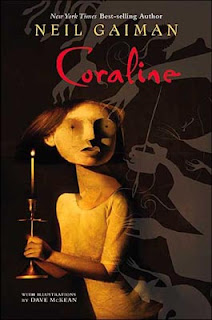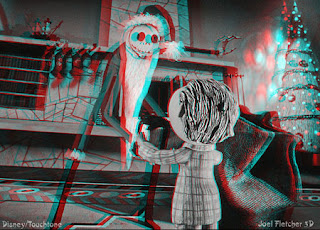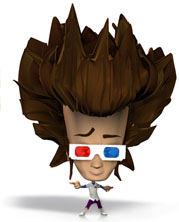Stop-motion animation in 3-D

A very exciting animated feature is slated for 2008 release in 3-D: 'Coraline', by Henry Selick’s animation studio Laika. A stop-motion feature film in stereo 3-D!
The first stop-motion feature in film history, but not the first 3-D stop-motion release. That honour goes to ‘In tune with tomorrow’ (aka ‘Motor Rhythm’), shot by John Norling in 1936. The second 3-D stereoscopic stop-motion short in history is then ‘The Adventures of Sam Space’, produced by Paul Sprunck in 1955. The third and latest stop-motion production in 3-D is ‘The Incredible Invasion of the 20,000 Giant Robots from Outer Space’ by 3-D Revolution Productions’ Elmer Kaan and Alexander Lentjes, released in 2000. This short is also the first 3-D stereoscopic animated short to employ CGI alongside stop-motion in film history.
So Henry Selick’s production company Laika is producing this first feature length stop-motion film in 3-D. But strictly speaking it is more the first stop-motion feature shot in 3-D rather than the first stop-motion feature release in 3-D, as the dimensionalized re-release of ‘Nightmare Before Christmas’ (also directed by Henry Selick) begets this title. An interesting point of this particular 2-D to 3-D conversion being that it cost ILM tens of Millions of Dollars and years of blood sweat and tears, in the US and in outsource location Hong Kong, to do the conversion, for which money they could have re-animated a whole new stop-motion feature. But that’s Hollywood logic for you.
3-D photograph taken by one of the Nightmare animators on-set.
So not the conversion's end-result
Apparently, Coraline is being shot using calculation of interocular values rather than using pre-viz to establish what interaxials will work best for particular shots. A very dangerous approach since you don’t want to get the interocular distance wrong when the stop-motion animation will have to be re-done completely when the shot turns out not to be working. Of course experience is something that can help a lot with calculating camera spacing, but it’s just not worth the risk of getting it awfully wrong when doing a particularly tricky shot like one with an animating camera and /or with an animated interocular.
With 3-D, the interocular and convergence values cannot be changed or corrected in post, unless dimensionalization is employed on one of the two view points or intermediate view reconstruction is employed. It would be really strange to have to do this in a medium that provides the producer with ultimate control, while for live-action a thing or two can be said about getting 3-D values wrong on location in the heat of filming. This is actually a big reason why the Real D and digital 3-D releases up until now have all been animated shorts and features and why live-action is being done in CGI (Beowulf, Battle Angel Alita / Avatar): total, perfect camera control.
![]()
![]()
![]()
![]()
![]()
![]()
![]()
![]()
![]()
![]()
![]()
![]()




